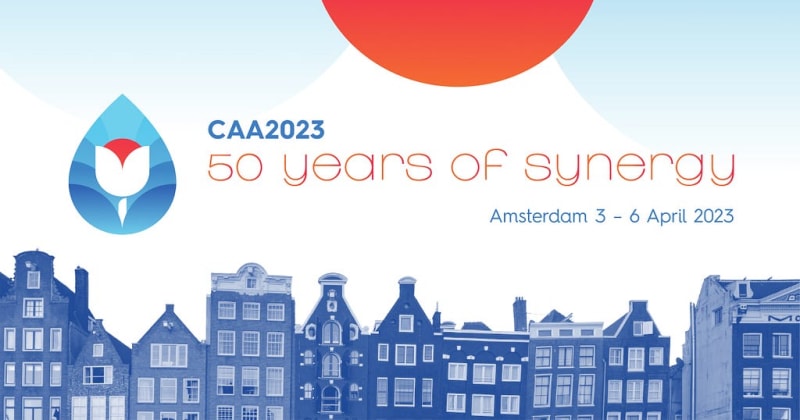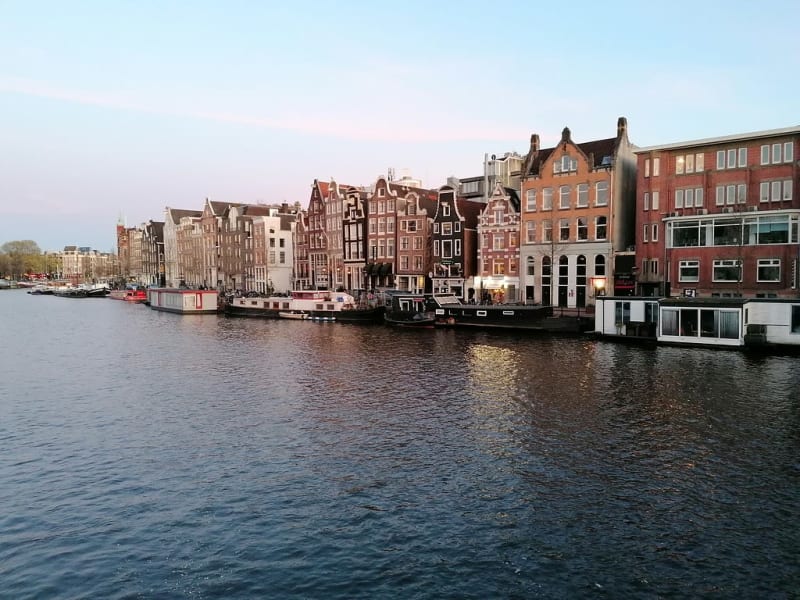Last year, one of my colleagues asked if we wanted to present our application at a conference. Hesitantly, I agreed.

CAA conference official banner, source: https://2023.caaconference.org/
I have to start with a short disclaimer. Even though I work as a software engineer, and that’s the career path I settled for, I am an archaeologist.
I have a master’s degree in Archaeology and started my Ph.D. in that field but dropped out after a year or so. After some additional career changes, I found my path in software engineering and programming, but I still have a passion for archaeology left in me. Also, my wife is an archaeologist (a real one).
Based on that, I often get involved in side projects and co-operations with archaeologists. Mostly, I work on data-collecting applications for field work and further analysis for projects in archaeology and broader historical sciences. Back then, when I started with those kinds of applications, there were hardly any good open source solutions for such tasks — or so I thought. Also, it was at the beginning of my software engineering path. So, I settled for custom solutions each time. Sometimes, it was in requirements; sometimes, it was due to a lack of better existing solutions. But in most cases, it was my decision. And it was probably the wrong one.
About the Conference
Last year, one of my colleagues asked if we wanted to present our application at a conference. Hesitantly, I agreed. I was not sure if we would have something worth presenting and also if I would find other papers interesting. But after the conference, I can say it was worth every minute spent there. And that’s how I found myself in Amsterdam, at CAA 2023, at the beginning of April.
But what does CAA stand for? According to their website:
Computer Applications and Quantitative Methods in Archaeology (CAA) is an international organisation bringing together archaeologists, mathematicians, and computer scientists. Its mission is to encourage and facilitate dialogue between these disciplines, to provide an overview of the present state of the discipline, and to stimulate discussion to progress the field. […]
CAA organises an annual international scientific conference covering a wide range of topics, including data acquisition and recording, conceptual modelling, semantic technologies, data analysis, data management, digital 3D object reconstruction, image visualisation in archaeology, geophysics, and GIS. The conference format includes thematic paper and poster sessions as well as round tables and workshops.
And this was the 50th annual conference. Yup, the first one took place in 1972 (there was no conference in 2020 due to obvious reasons). Two years after Edgar F. Codd published his paper on relational data model, and two years before D.D. Chamberlin and R.F. Boyce published their paper on SQL (called SEQUEL back then). I was pretty surprised to find out that in that analog world, there were people with such vision to start going in a digital direction despite all of that seeming temporary. They were true early adopters.
The conference took place in the lovely city of Amsterdam. It was fully packed with presentations about deep learning, 3D data modeling, web and mobile data collection solutions, GIS and mobile GIS, and gamification. The first day contained various workshops, and the other three contained presentations.
Why
Most sessions I attended were focused on collecting data (also in the field), creating tools for further analysis, and presenting the research results. To be honest, I wasn’t prepared for what I saw. The amount of clever and well-thought-out tools and solutions I saw a bit were overwhelming and exceeded my wildest expectations. Also, to be perfectly honest, I must mention that many of them caused a little sting of jealousy. The good kind that boosts your creativity, the one saying, “Whoa, that’s awesome. Why I haven’t thought about that?”
But also, many more topics were discussed at the conference, like deep learning, 3D modeling, or gamification. But they were not my primary interests, so I focused on the abovementioned ones.
What I learned
For me, there were three main outcomes of attending such a conference. First, and most importantly, I learned (or rather was reminded) that I don’t always have to go the custom path. Sometimes, it’s better to use existing solutions and even sacrifice a few planned features to use a more standardized approach. There was a terrific quote I saw in one of the presentations:
“Standardized is better than perfect.”
Sadly, I don’t remember whose presentation it was and where it was taken. And I’m sorry I can’t give proper credit to the person who said that. But it reminds us that creating software is a game of compromises between what we want, what clients want, what is even possible, and time and money constraints.
The second great outcome for me was a huge boost in creativity and motivation from all the examples of adapting tools and empowering work empowered by tools instead of being defined by them. For example, there was almost a whole session discussing the usage of LiDAR (Light Detection and Ranging) sensors in the latest versions of the iPhone to document the archaeological features in a three-dimensional way. Back in my day (that sounds awful), when I was still working in archaeology nine or ten years ago, tools used for that were extremely expensive and required trained operators. Now everyone can do this. That’s mind-blowing.
The last outcome for me was a great opportunity to confront my software development approach with effective, radically different, and no less creative approaches. The possibility to see less conservative, free-from-bias points of view helps us better understand our clients and their needs. Even though they rarely have a scientific background. Also, looking for a little science in our work helps us understand what we are doing and aiming for.
What you can learn
Based on what I saw at this conference and what I see in my day-to-day job, many development teams and software developers could benefit from a little change in approach. Being a bit scientific in our work can give us wider perspectives to solve problems. Also, it allows us to be more resourceful. Don’t get me wrong, I don’t want to criticize any development methodologies here. I don’t have anything against Agile and Scrum. Quite the opposite; I love them.
On the other hand, this kind of lean approach, working with what one has and using more complex solutions only when strictly necessary, can benefit everyone. Also, most importantly, it limits bloat in a project, which is great for development teams. To be honest, academias are one of the most bureaucratically-bloated organisations I’ve ever seen (so far). But when we give that to teams working on single projects, they can oppose that trend and work efficiently toward their goals.
Also, I believe this kind of conference is the best place to learn new, creative ideas, as it gives you access to the most creative usage of tools. Sometimes, we are so used to our expertise that we are blind to other solutions, and the only thing needed to realize that is a new perspective. That’s the easiest way to make us leave our cozy programming comfort zone — which is where the growth is.
Why IT and science communities should meet more often
Because it’s the best and easiest way to get a wider perspective to see your software differently. Also, this meeting can easily fuel your curiosity and creativity. Limiting ourselves to tech conferences can cripple our view of the tech landscape.
Why humanities and not, for example, math conferences? If you are not strictly math-oriented in your work, the entry threshold may be too high. Don’t get me wrong, I’m not saying that humanities are easier. You may not be able to get all the intricacies of problems discussed, but when you see the pyramid, you know what it is. Also, I believe that between us, there are a lot of people who don’t have a background in CS. And going back to your roots and previous passions can be most refreshing and beneficial.
If I can convince anyone to try that and be more scientific in their work, read something about that, or maybe attend conferences that bridge one’s interests and software, I would be the happiest person in the world.
Summary
I was amazed to learn that scientific communities are the best place to look if you are looking for true early adopters for your solutions. They may not have the largest budgets, but they have a huge curiosity.
Am I going to next year’s CAA conference? I’d love to, but due to logistic problems, it may not be possible. It will take place in Auckland in New Zealand, directly from my place to the other side of the globe.



Top comments (0)